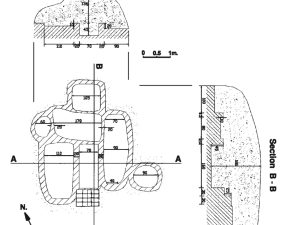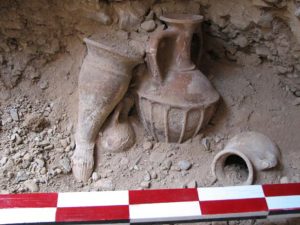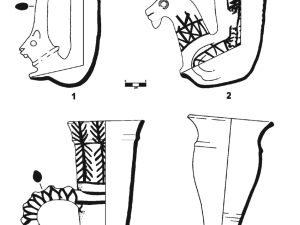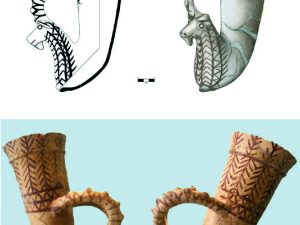Velirānولیران
Velirān is a village located 1.5 km south of the town of Damāvand, in the Provine of Tehran.
35°41’30.00″N
52° 03’24.00″E
Map
Historical Period
Parthian - Sasanian
History and description
The archaeological site is a mound located in the eastern outskirts of Damāvand, some 500 m south of the village of Velirān. The uppermost layers of the mound contain an occupation level of Sasanian times. The excavations revealed that the mound was the site of Parthian graveyard including a large subterranean tomb (fig. 1) called hypogeum by the excavators (Ne'mati and Sadraie, “Parthian Rhythons from Velirān,” p. 304; “Barresi-ye shivehāh-ye tadfin,” pp. 107-108). The burials were found on three mud-brick platforms (fig. 2). Four graves of various types from the Parthian period were excavated at Velirān. In addition, remains of a building from the Sassanid period, including silver coins and ostraca were unearthed.
Archaeological Exploration
Mohammad-Reza Ne'mati and Ali Sadraie carried out carried out two seasons of excavations at Velirān in 2006 and 2007 on behalf of the Iranian Center for Archaeological Research and the Tehran Office of the Iranian Cultural Heritage and Tourism (Ne’mati and Sadraie, “Parthian Rhythons from Velirān,” p. 306; “Barresi-ye shivehāh-ye tadfin,” p. 104).
Bibliography
Ne’mati, M. R. and A. Sadraie, “Parthian Rhythons from Velirān,” Iranica Antiqua, vol. 45, 2010, pp. 305-319.
Ne’mati, M. R. and A. Sadraie, “Barresi-ye shivehāh-ye tadfin-e dowre-ye ashkāni dar gūrestān-e Velirān, Damāvand,” Motāle’āt-e Bāstānsheāsi, vol. 6, 1391/2012, pp. 103-121.
Author: Ali Mousavi, January 7, 2022
Originally published: January 5, 2022
Last updated: September 19, 2024





































































































































